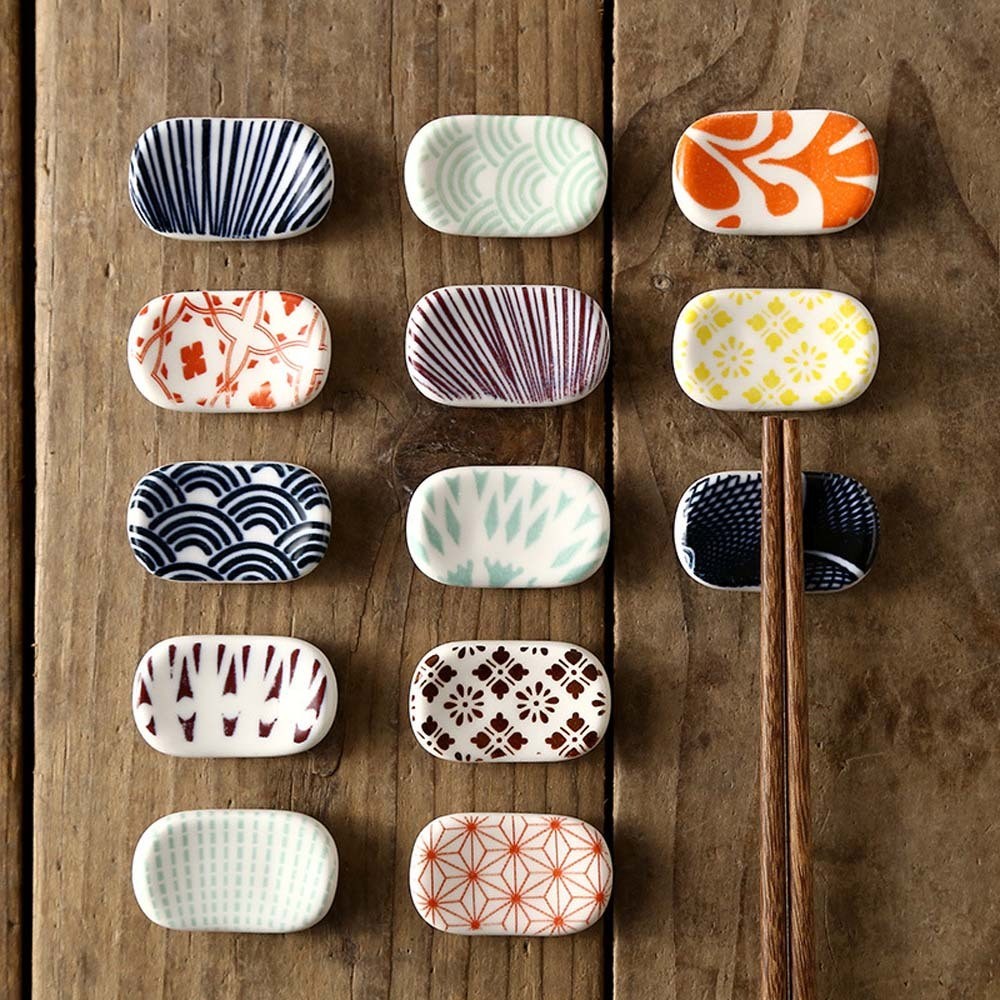
The Ultimate Guide to Japanese Chopsticks and Chopstick Rests
Japanese chopsticks, or "hashi" (箸), are an essential part of Japanese dining culture, reflecting centuries of tradition and etiquette. Accompanying them are the chopstick rests, or "hashioki" (箸置き), which not only serve a functional purpose but also add an aesthetic touch to the dining table. This guide will delve into the world of Japanese chopsticks and chopstick rests, offering insights into their history, types, usage, and etiquette.
Understanding Japanese Chopsticks

History and Significance
Chopsticks in Japan, known as "hashi" (箸), date back to the Nara period (710-794 AD) and have evolved from mere cooking tools to an integral part of the dining experience. They are not just utensils but carry significant cultural values, often symbolizing good fortune and happiness.
Materials and Designs
Japanese chopsticks are traditionally made from bamboo or wood, favored for their lightweight, natural feel, and grip. However, you can also find them in materials like plastic, metal, and even ivory. They typically measure between 20 to 23 centimeters for adults, with slightly shorter ones for children.
The designs range from simple and minimalist to elaborate and ornate, often adorned with lacquer, paintings, or inlay work. Seasonal and celebratory designs are also popular, making chopsticks a common gift for weddings and other celebrations.
Choosing and Caring for Your Chopsticks
When selecting chopsticks, consider the material, length, and grip. Wooden or bamboo chopsticks with a slightly rough texture are generally easier to use, especially for beginners. To care for your chopsticks, wash them gently with soap and water and dry them immediately. Avoid using abrasive scrubbers. For wooden chopsticks, periodically rubbing them with a small amount of food-safe mineral oil can help maintain their condition.
The Art of Chopstick Rests (Hashioki)

Purpose and Types
Chopstick rests, or "hashioki" (箸置き), serve the practical purpose of keeping the chopstick tips off the table, thus maintaining cleanliness and order. They come in various materials such as ceramic, wood, glass, and stone. The designs can range from simple shapes to intricate representations of animals, natural elements, or seasonal motifs.
Selection and Placement
When selecting chopstick rests, consider the occasion, the season, and the overall table setting. The chopstick rest should complement the chopsticks and the dinnerware. Place the chopstick rest in front of your dish, parallel to the table edge, with the chopsticks lying horizontally on top when not in use.
Japanese Chopstick Etiquette
Understanding and respecting chopstick etiquette, or "hashi no rei" (箸の礼), is crucial in Japanese culture. Here are some key points:
- Do not rub your chopsticks together: This implies that the chopsticks are cheap or splintered.
- Avoid pointing with chopsticks: Pointing at someone or something with chopsticks is considered rude.
- Do not spear food: Spearing food with chopsticks is seen as impolite. Instead, use them to pick up food gently.
- Place chopsticks properly: When not eating, rest your chopsticks on the chopstick rest. If a chopstick rest is not available, make a rest out of the chopstick wrapper or lay them across your dish.
- Avoid passing food directly from chopstick to chopstick: This resembles a funeral rite and is considered extremely unlucky.
- Do not leave your chopsticks standing vertically in a bowl of rice: This is another funeral rite and is seen as a bad omen.
Conclusion
Japanese chopsticks ("hashi" 箸) and chopstick rests ("hashioki" 箸置き) are more than just dining utensils; they are a reflection of Japanese heritage, art, and etiquette. By choosing the right chopsticks and rests, caring for them properly, and adhering to traditional etiquette ("hashi no rei" 箸の礼), you can enhance your dining experience and show respect for Japanese culture. Whether you are dining in Japan or incorporating Japanese elements into your meals at home, understanding the significance and proper use of these utensils will enrich your culinary journey.
